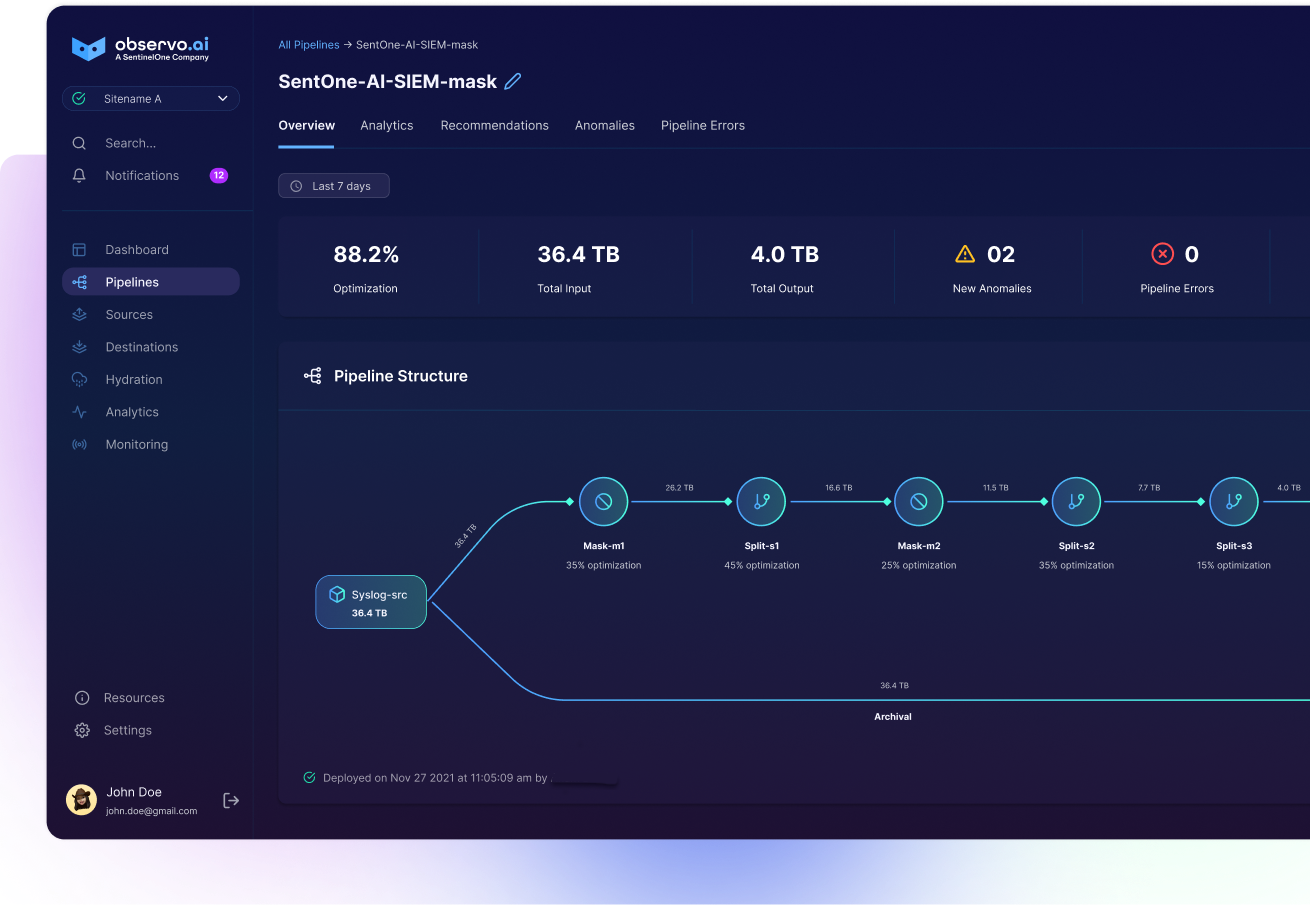Observability 101: Navigating the Telemetry Data and Observability Maze in Enterprises

Introduction
The technological landscape for enterprises has been significantly reshaped by the advent of telemetry data and observability. These tools have become pivotal in monitoring and managing complex digital systems, yet they bring a host of challenges that enterprises must navigate. This blog explores these challenges in detail, citing figures from recent studies and research, and discusses how observability pipelines can offer solutions.
1. The Challenge of Data Volume and Complexity
One of the paramount challenges facing enterprises today is the overwhelming growth in data volume. The Cisco Annual Internet Report (2020) noted an astronomical increase in data creation, reaching 847 Zettabytes per year. The complexity of this telemetry data further complicates matters, as it includes a diverse array of formats and comes from various sources. This variety adds layers of complexity to data management and analysis.
2. Integration and Compatibility Hurdles
Gartner's Magic Quadrant for Analytics and Business Intelligence Platforms (2021) highlighted that approximately 70% of enterprises encounter difficulties with integrating disparate data sources. This issue stems from the use of multiple tools and platforms, each generating data in its unique format, leading to challenges in achieving a comprehensive view of system performance.
3. Escalating Costs in Data Management
The economic aspect of managing telemetry data cannot be overlooked. According to IDC's Worldwide Semiannual Big Data and Analytics Spending Guide (2022), global revenue for big data and analytics solutions is expected to soar to $260 billion by 2024. This figure underscores the growing financial investment required to effectively handle telemetry data.
4. Real-Time Analysis and Responsiveness
The capability to analyze and respond to telemetry data in real time is crucial for prompt decision-making. New Relic's Global Observability Report (2021) found that less than half of the enterprises surveyed were capable of real-time data analysis and response. This lag in responsiveness can be critical in situations where immediate action is required to resolve system issues.
5. Security and Privacy Implications
As data volumes increase, so do concerns regarding security and privacy. IBM's Cost of a Data Breach Report (2021) revealed that the average cost of a data breach had climbed to $4.24 million per incident. This alarming figure highlights the risks involved in managing large volumes of sensitive telemetry data.
6. Technological Advancements and the Skill Gap
The pace of technological change in the field of telemetry and observability is rapid, leading to a significant skill gap. The Linux Foundation's Open Source Jobs Report (2022) indicated a 50% increase in the demand for skilled professionals in this domain. This gap presents a challenge for enterprises in finding and training the right talent to manage their telemetry systems effectively.
7. Scalability Concerns
Another critical issue is scalability. An AWS case study (2020) demonstrated how scalability challenges could affect system performance and reliability. As enterprises grow, their telemetry and observability systems must scale accordingly, which can be a complex and resource-intensive process.
The Role of Observability Pipelines
In addressing these multifaceted challenges, observability pipelines like Observo.ai offer a beacon of hope:
- Efficient Data Management: These pipelines can handle the processing and analysis of vast amounts of data in real time, thereby tackling the issue of data volume and complexity.
- Cost Management: By optimizing data processing methods, observability pipelines offer a more economical solution, helping to manage the escalating costs associated with telemetry data.
- Unified Data Integration: Observability pipelines facilitate the integration of data from various sources, providing a more cohesive and comprehensive view of system performance.
- Enhanced Security Protocols: With advanced security measures, these pipelines ensure the safety and privacy of telemetry data, addressing the concerns highlighted in IBM's report.
- Scalable and Flexible Systems: Designed for scalability, observability pipelines can adapt to the growing needs of an enterprise, ensuring that the system remains robust and reliable as the organization expands.
- Bridging the Skill Gap: These pipelines are often equipped with user-friendly interfaces and automated features, making them accessible to a broader range of professionals and thereby addressing the skill gap in the industry.
Conclusion
The challenges that enterprises face in managing telemetry data and ensuring effective observability are manifold, including data volume and complexity, integration issues, cost management, real-time analysis, security and privacy concerns, technological advancements, and scalability. Observability pipelines emerge as a vital tool in this landscape, offering efficient, secure, and scalable solutions to these challenges. As enterprises continue to evolve in this data-driven era, leveraging advanced observability pipelines will be key to navigating the complexities of telemetry data and observability.
__________________________________________________________________________________
References:
- Cisco. (2020). "Annual Internet Report."
- Gartner. (2021). "Magic Quadrant for Analytics and Business Intelligence Platforms."
- IDC. (2022). "Worldwide Semiannual Big Data and Analytics Spending Guide."




